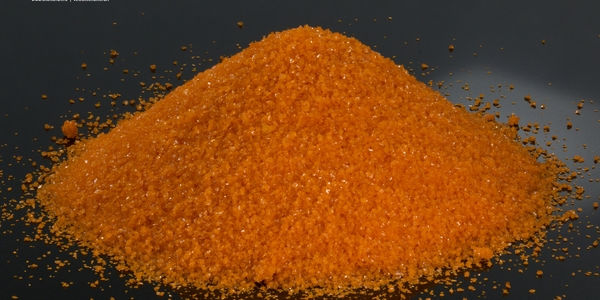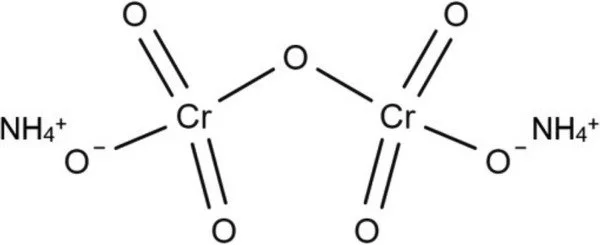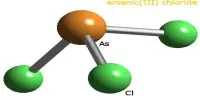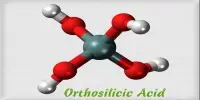The orange-red needles formed during crystallization are ammonium dichromate. It has the formula (NH4)2Cr2O7 and is an inorganic compound. Chromium is in a +6 oxidation state in this compound, as it is in all chromates and dichromates, and is commonly referred to as hexavalent chromium. A toxic chemical salt used to sensitize organic emulsions like gelatin to the actinic light hardening effect. It is a salt made up of ammonium and dichromate ions. It is more light sensitive.
Because it is used in tabletop “volcano” demonstrations, ammonium dichromate is also known as Vesuvian Fire. However, due to the carcinogenic nature of the compound, this demonstration has become unpopular in schools. It was also used in pyrotechnics and early photographic processes.
Properties
Ammonium dichromate is a crystalline solid that is bright orange red in color. It easily ignites and burns, leaving a dense green residue. When heated in a closed container, the container may rupture due to material decomposition. The compound exists at room temperature and pressure as orange, acidic crystals that are soluble in water and alcohol. It is formed by the reaction of chromic acid with ammonium hydroxide, followed by crystallization.
- Chemical formula: (NH4)2Cr2O7
- Molar mass: 252.07 g/mol
- Appearance: Orange-red crystals
- Density: 2.115 g/cm3
- Melting point: 180 °C (356 °F; 453 K) decomposes
- Solubility in water: 18.2 g/100ml (0 °C); 156 g/100ml (100 °C)
- Solubility: insoluble in acetone; soluble in alcohol

Reactions
- Tabletop volcanoes and thermal decomposition
The volcano demonstration involves igniting a pile of the salt, which initiates the following exothermic conversion:-
(NH4)2Cr2O7 (s) → Cr2O3 (s) + N2 (g) + 4 H2O (g) (ΔH = −429.1 ± 3 kcal/mol)
It is thermodynamically unstable, just like ammonium nitrate. Once started, its decomposition reaction completes, producing voluminous dark green powdered chromium(III) oxide. In this reaction, not all of the ammonium dichromate decomposes. When the green powder is mixed with water, the leftover ammonium dichromate produces a yellow/orange solution.
- Oxidation reactions
Ammonium dichromate is an extremely strong oxidising agent that reacts violently with any reducing agent. The greater the strength of the reducing agent, the more violent the reaction. It’s also been used to help alcohols and thiols oxidize. In the presence of Mg(HSO4)2 and wet SiO2, ammonium dichromate can act as a very efficient reagent for the oxidative coupling of thiols under solvent-free conditions. Under relatively mild conditions, the reactions produce reasonably good yields. The compound is also used in the solvent-free oxidation of aliphatic alcohols to their corresponding aldehydes and ketones in ZrCl4/wet SiO2 with relatively high yields.
Uses
It was used in pyrotechnics, early photography, lithography, as a source of pure nitrogen in the laboratory, and as a catalyst. It is also used as a mordant in the dyeing of pigments, the production of alizarin, chrome alum, leather tanning, and oil purification.
Photosensitive films containing PVA, ammonium dichromate, and a phosphor are spin-coated as aqueous slurries in the production of the phosphor raster of television screens and other devices. Ammonium dichromate serves as the photoactive site.
- It is used in sensitizing solutions used in lithography.
- Used in pyrotechnics, lithography and photoengraving. It is also used as a magnetic recording material.
- It is used as an approved pesticide and used as a mordant for dyeing, used as a pigment.
Safety
Ammonium dichromate, like all chromium (VI) compounds, is highly toxic and a proven carcinogen. It is also a strong irritant.














